1020 St. Anne St, New Orleans, Louisiana 70130
In 1974, a live recording titled "Marie Laveau," sung by country singer Bobby Bare and written by Shel Silverstein and Baxter Taylor, made it to the top spot of the U.S. Billboard Hot Country singles. Nearly 40 years later, Marie Laveau was again thrust into mainstream American pop-culture, with the success of American Horror Story: Coven. Even though the series was plagued with historical inaccuracies, such as the nonexistent relationship between Laveau and “Mad” Madame Delphine LaLaurie, in the end, it was good business, something Marie Laveau surely would have appreciated.
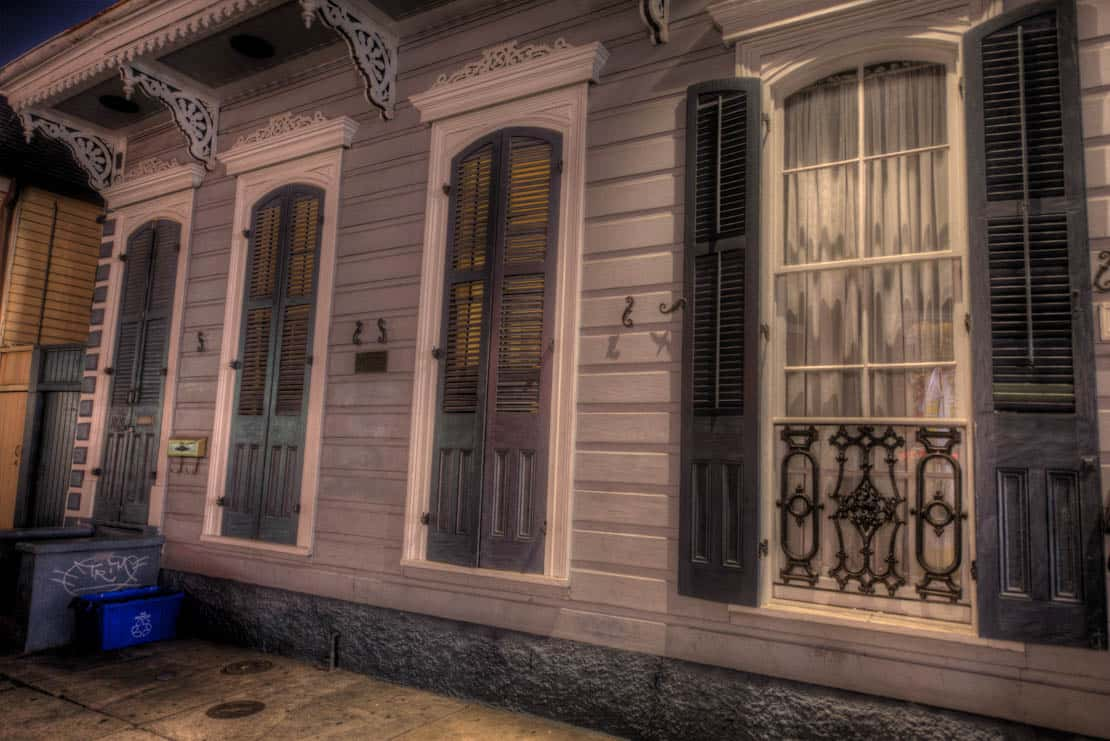
A long standing rumor perpetuated by many tour guides to this day in New Orleans is that Marie was a hairdresser, despite the fact that there is no archival evidence that she ever was. Perhaps the explanation for this rumor is simplistic in nature; perhaps, it was a cover story used by some of the elite women on Marie's large "client list," who may have been concerned about associating with a “scandalizing” voodoo priestess. Regardless, Marie would go their homes to perform her tasks. While there, she would earn favor with the slaves by giving them charms, prayers and even spells. In return, the slaves would tell Marie secrets about their masters, in which Marie used this information to captivate (fool) her clients with the incredible insights that the spirits shared with her, and she, of course, was always willing to help with any issue. For a fee.
With her unique blending of Voodoo rituals and Catholicism, it did not take long before Marie Laveau became known throughout the city as the Voodoo Queen of New Orleans.
To comprehend the importance of Marie Laveau, you need to start from the beginning, where she came from, how she was raised.
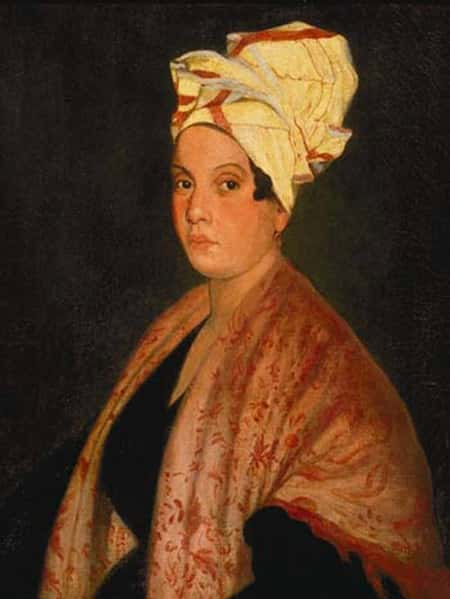
Her story actually begins with her grandmother Catherine, who was taken from Africa at only 7 years old. Catherine was unbreakable and eventually bought her freedom out of slavery. Catherine became a businesswoman, owning her home and tirelessly working to have her five children set free.
Catherine's daughter Marguerite (Marie's mother) was owned by her own father, which was a twisted case of reality during the eighteenth century, leading all the way up to the Emancipation Proclamation. Marguerite was freed from her father at 18, but was then forced into an arranged relationship with an older, rich white man. She had three children by him, and tried to remain positive despite her situation, but she still secretly wanted more and dared to "audaciously" wish for love.
Marguerite believed she had found said love with a man named Charles Leveaux, who happened to be the son of a rather important New Orleanian politician. Their affair resulted in an unexpected pregnancy; their daughter, Marie, was born on September 10, 1794/1801. Fearful of what might happened to Marie if discovered, Marguerite made the hard choice to leave her daughter to be raised by her mother, Catherine, and then returned to her arranged relationship.
Marie had a peaceful childhood, thanks to her grandmother. When she turned 18, Marie met and married Haitian immigrant, Jacques Paris. Unfortunately, we know very little about this short time in her life, but one day, Jacques abruptly disappeared. Did Jacques die? Or was his disappearance more selfish in nature, perhaps abandoning his new wife Marie in order to return to Haiti? Or were the circumstances behind his disappearance of a more unspeakable, sinister nature in which he was murdered? Jacques and Marie were married only a year, but we know just as little about their day-to-day life as we do about Jacques Paris’ ill-timed vanishing act.
Reportedly, just before the year 1826, Marie met Christophe Glapion, a white man of French nobility, whom she entered into a relationship with. Of the (approximate) fifteen children she birthed during during her time with Glapion, there were only two surviving children: Marie Heloïse Euchariste Glapion (born in 1827) and Marie Philomène Glapion (born in 1836), the latter of the two would eventually continue her mother's work, and become a famous Voodoo priestess on her own merit. But for Marie I and her relationship with Glapion, they remained dedicated to one another until his death in the 1850s; and from all accounts, Marie never did strike up another relationship before her death thirty years later.
On Sunday after Mass ended, slaves were free for the rest of the day due to the regulations of the Code Noir, which translates to Black Code. Thousands of enslaved people and free people of color would venture to Congo Square, located in the back end of the French Quarter in what would have once been wilderness and untamed swampland. There, they could trade or barter for goods, and visit with family members who had been sold to other slave owners. They would celebrate with songs, music, dancing and rituals till the night sky fell.
Trained by Voodoo practitioner Dr. John (allegedly an African prince from Senegal), Marie Laveau quickly became his successor, as well as the main attraction at the center of the Square. She would lead in chants, sell cures and charms (gris-gris), and gather intelligence (like the NSA), you know, on the latest scoop on her elite clients. Marie was also known to walk around with a boa constrictor draped over her shoulders, the snake's name was Zombi, after the serpent deity, Li Grand Zombi. Slaves were known to gather, praise and shout "Queen Marie! Queen Marie!" as a rally cry for all to hear.
Marie welcomed her numerous wealthy clients to Congo Square to bear witness to the sacred rituals, charging them a ticket of sorts for consultations ranging from spiritual healing and herbal remedies to fortune telling. Voodoo was a business for Marie Leveau, but at the same time she was known to be truly compassionate, as she would often visit the hospitals of the city and help the poor and sick with her remedies and prayers.
Marie lived in an old adobe cottage at 152 Rue St. Ann (the location is marked today as 1020 St. Ann Street). Legend has it that she received the home for helping an affluent man free his son from murder charges. It has been told that Marie held three peppers in her mouth, while infusing them with her intentions. She then hid the peppers under the seat of the presiding judge, and then nailed a cow's tongue under the seat of the prosecutor, which apparently impaired his speech and left him unable to adequately present his case. The son was found innocent, and Marie received her new home.
This legend may be erroneous, as it’s more historically plausible that the land was actually purchased by Marie's grandmother Catherine before being passed down through the generations.
About 1875, Marie became sick and confined herself to her home on Rue St. Ann. According to various newspaper accounts, Marie was so sick that she rarely emerged form St. Ann by the end of her life.
The original Marie Laveau house was torn down in the year 1903, and the new structure was built on the same foundation as the original, making some believe that the residual energy from Marie Laveau still calls this location home. People have claimed to have seen her walking down St. Ann Street wearing a long white dress, her trademark tignon (a turban headress), which supposedly had seven points folded into it to represent a crown. She is the Queen of Voodoo, after all. Marie's spirit and those of her followers are known to still perform rituals at the site of her old house. Once source even claims that the rituals often include animal sacrifices for protection.

The home is now used as a vacation rental. A few years ago, a couple decided to come to New Orleans for a relaxing vacation and thought it would be interesting to stay at the site of the old Laveau house. After touring the French Quarter for awhile, they returned to the house for the night. Later, sounds of chanting and even drumming cut through the silent night, and the couple wrongfully assumed the noise was coming from outside. The husband checked outside to find nothing but the dead of night. Curious, he walked around the block and towards the park, but still found nothing but silence. When he entered back into the house, he came to the realization that the sound of the chanting and drums was emanating from the living room. The couple, unnerved by this strangely eery experience, decided they were not going to sleep there that night, and promptly left. Upon returning the following morning, they walked to the center of the living room, where the wife noticed a single pristine feather laying on the floor. The couple checked all the windows in the house, but they were all locked shut. Needless to say, they left and never returned.
Now, a single pristine feather was Marie Laveau's signature object, and is considered to be a great relic among Voodoo practitioners. Feathers are believed to bring the one who discovered it great luck. On the other hand, if it had been discovered on one's pillow, it is said that the feather will bring you grave sickness, or even death. According to legend, this ritual involves the placing of a chicken's head into the victims pillow, and as time goes by, the hex takes hold, producing a single feather on top of said pillow.
One man recounted his stay at the house, recalling that he had just woken up from a nap when his gaze landed on a shadowy figure standing in the corner of the room, glaring at him.
Another account comes from another visitor of Marie Laveau’s house. She remembered waking one morning on her second night at the house, and suddenly she became frightened as she was physically unable to get up, as if someone was holding her down.
Luckily, for these two individuals they did not find a feather on their pillow.
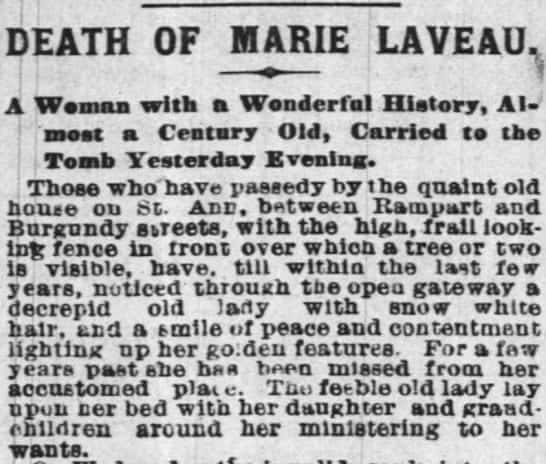
As Marie grew frail and her hair turned white as snow, she began participating less and less in Voodoo rituals, and became more focused on her Catholic faith. She attended mass daily, and worked with "death row" prisoners, helping them to repent before they were sent to hang from the gallows.
In Marie's final days, she surrounded herself with sacred pictures and other religious relics. She died in June of 1881 with a devout trust in heaven.
Marie Laveau's obituary from the June 17, 1881, issue of The New Orleans Daily Picayune (the predecessor to The Times-Picayune) related:
DEATH OF MARIE LAVEAU
"A Woman with a Wonderful History, Almost a Century Old, Carried to the Tomb Yesterday Evening"
“Those who have passed by the quaint old house on St. Ann, between Rampart and Burgundy streets with the high, frail looking fence in front over which a tree or two is visible, have noticed through the open gateway a decrepid old lady with snow white hair, and a smile of peace and contentment lighting up her golden features. For a few years past, she has been missed from her accustomed place. The feeble old lady, lays upon her bed with her daughter and grand children around her ministering to her wants.”
Marie was buried in the family tomb at St. Louis Cemetery #1.
Of all the sites from around the world associated with Voodoo, the tomb of Marie Laveau is at the top of the list, and has become a focal point for tour groups. Visitors sometimes leave offerings at the site, in the form of coins, beads and candles as part of voodoo tradition. According to one local legend, Marie Laveau’s spirit can be invoked to grant wishes. First, you must begin by knocking three times on the slab, and then, and only then, you may ask her for a favor.
Another theory states that you must: “Draw the X, place your hand over it, rub your foot three times against the bottom, throw some silver coins into the cup, and make your wish.” A third source claims to receive a wish you need to “leave offerings of food, money and flowers, then ask for Marie’s help after turning around three times and marking a cross with red brick on the stone.”
Marie Laveau Disclaimer: While you may have once seen carvings on the tomb, along with red X’s and scribbled names, this is against the law. Even if you want Marie Laveau’s help so desperately, don’t succumb to ruining her tomb—you’re much better off visiting her official shrine at the Healing Center on St. Claude, just across from the new St. Roch Market.
One infamous ghostly encounter took place during The Great Depression. As the story goes, a homeless man fell asleep on the top of a tomb in the cemetery, but shortly after falling asleep, he suddenly awoke to the banging of drums and eerie chanting. He happened upon the tomb of Marie, where he encountered the ghosts of nude men and women dancing around the tomb. In the center, it was Marie and her boa, Zombi.
A man named Elmore Banks had another experience near St. Louis Cemetery No. 1, in the mid-1930s, when an old woman came into the drugstore where he was a customer. For some reason, she left the proprietor feeling frightened, as he quickly proceeded to run off to the back of the store. The woman laughingly asked Elmore Banks, “Don’t you know me?”
To which Banks replied, “No, ma’am.”
The woman, angered by his answer, slapped him across the face. She then jumped up in the air and levitated out the door and over the top of the telephone wires. When she passed over the graveyard wall to St. Louis Cemetery #1, she vanished in thin air.
As you might imagine, Banks was terrified and the sight of a levitating woman left him passed out cold. He was revived by the store proprietor, who gave him whiskey and informed him: “That was Marie Laveau.”
After Marie I died in 1881, The Queen's look-alike daughter, Marie Laveau II, followed in her mother's footsteps and took over the family business. Marie II looked so much like her mother that people in the city who saw her thought that The Queen had been resurrected from the dead. Maybe, they said in hushed whispers, Marie Laveau was even immortal.
Naturally they wondered why she appeared so much younger with the vigor of her youthful days. Maybe she used the Sanderson Sisters' potion to "suck the lives out of the children," so that she may remain young forever. Sounds like a Hocus Pocus joke, but there was an actual rumor at the time that Marie Laveau consumed the souls of her fellow New Orleanians to regain her youthfulness. Marie II, ever the business woman like her mother, didn't mind the attention or the free publicity.
But, Marie II, unlike her mother, was rumored to embrace the darker side of voodoo. She was known to throw extremely wild rituals around New Orleans. She capitalized on her mother's success, and grew her audience. Celebrations on Bayou St. John became the perfect venue for Marie II to perform. Marie II made sure that the tourists knew about it (tourists can still be in the know at the Marie Laveau's House Of Voodoo on Bourbon Street, the one time shop of Marie II), but St. John's Eve was different. It was a sacred, strictly locals-only event.
The evening of June 23, the night before St. John the Baptist's birthday, "St. John's Day," is the most important date for Voodoo practitioners. The night before, Marie II would hold a celebration on the banks of Bayou St. John. Bonfires brought light to the dancing, and prayers that gave thanks to the saints. This celebration still continues today, and can be found alongside Bayou St. John at the Magnolia Bridge across from Cabrini High School on Moss Street.
If you attend the celebration, Marie Laveau’s spirit just might materialize and she just might grant you a wish.
If you would like to learn more about Haunted New Orleans and Marie Laveau, please consider taking one of our Ghost Tours.
And if you'd like to adventure on your own, here are some of the places you might encounter the spirit of Marie Laveau:
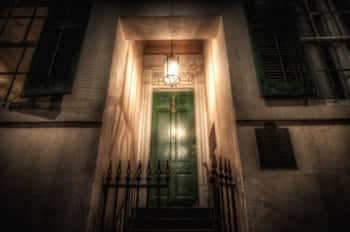
Was this the site of a grizzly mass murder?

New Orleans' most haunted Cemetery
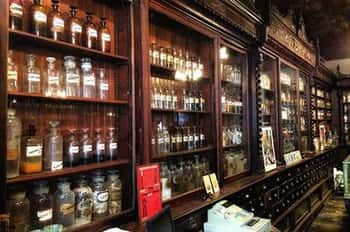
Who haunts this museum, and why?